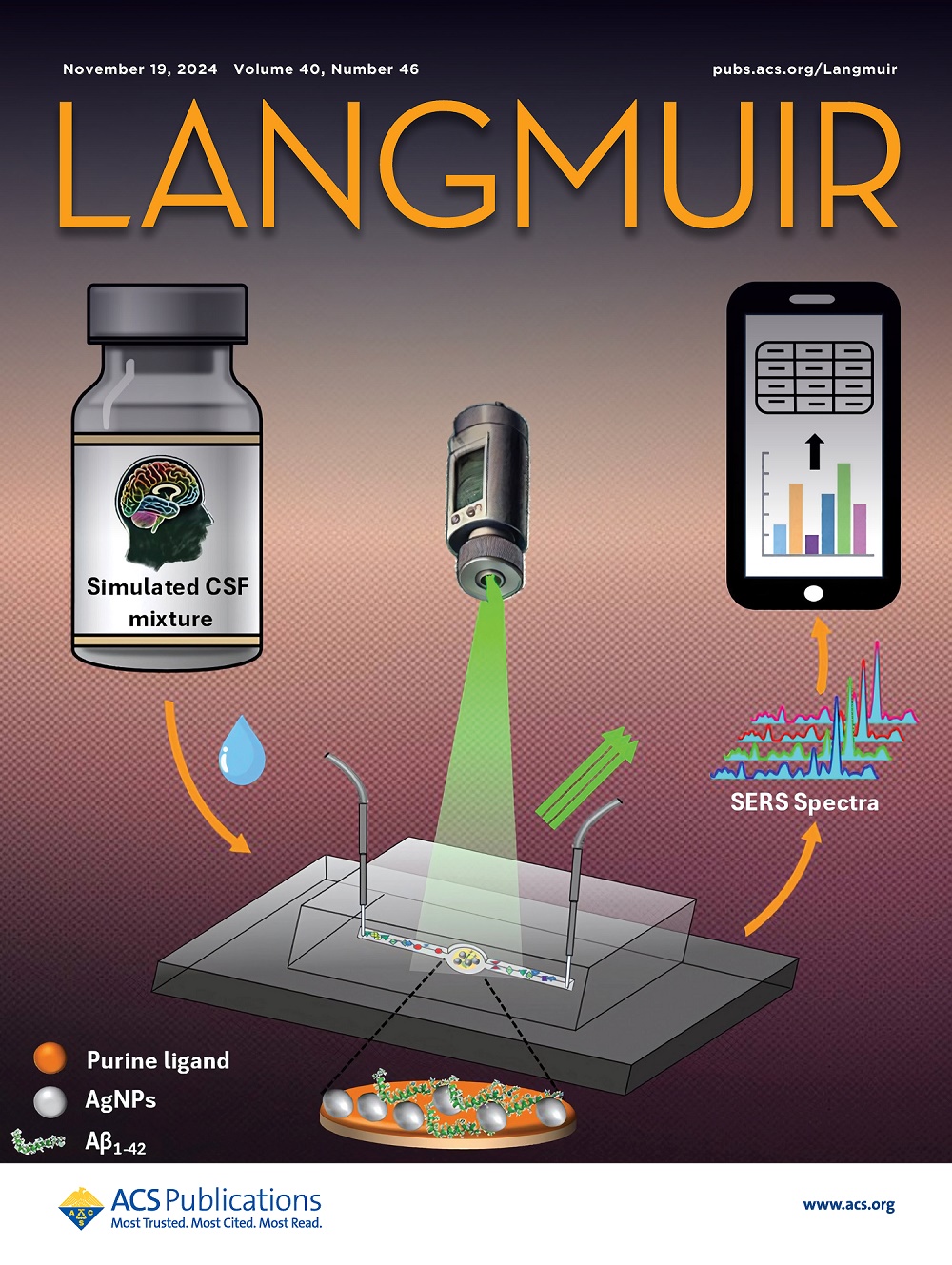Interaction of Poly(acrylic acid) Brushes with Multivalent Cations: An In Situ Study.
IF 3.7
2区 化学
Q2 CHEMISTRY, MULTIDISCIPLINARY
引用次数: 0
Abstract
Weak polyelectrolyte brushes represent a versatile class of responsive surface coatings. The adjustment of their charges by modifying the pH value and the salt content of the surrounding solution has a considerable effect on the elongation of the brush, the interaction between the chains, and the degree of swelling. Recent studies have extensively demonstrated the impact of singly charged cations through theoretical and experimental means. Analyses of the interaction between polyacids and multicharged cations remain underrepresented. Therefore, the influence of multivalent cations (Ca2+ and Ce3+) on the swelling behavior of poly(acrylic acid) (PAA) brushes is investigated as a function of salt concentration and pH. Swelling measurements show a behavior that differs significantly from the well-known case of monovalent cations. To elucidate this anomalous behavior, this study employs a combination of in situ spectroscopic ellipsometry, atomic force microscopy (AFM), and attenuated total reflection Fourier transform infrared spectroscopy (ATR-FTIR). The investigations reveal a highly intricate interaction behavior, which can be ascribed to the multivalency of the cations utilized. The FTIR measurements indicate the impact of the cations on the pKa value of the brush and the dissociation behavior. This study provides insights into the charging properties of PAA brushes, highlighting the decisive additional influence of the valency of the cations in combination with their concentration. Multivalent ions have been observed to substitute for the protons of the carboxyl groups through an entropically driven process, resulting in degrees of dissociation, α > 0.5, even at a pH of 3, where PAA brushes are expected to be fully undissociated. This phenomenon leads to an increased degree of swelling at very low salt concentrations and a reduction at increasing ionic strength. Evidence was found for different types of ion/carboxylate coordination, with bridging coordination between the carboxyl groups of PAA and the cations.聚丙烯酸刷与多价阳离子的相互作用:原位研究。
弱聚电解质刷代表了一种多用途的反应性表面涂层。通过改变周围溶液的pH值和含盐量来调整它们的电荷,对电刷的伸长率、链间的相互作用和膨胀程度有相当大的影响。近年来的研究通过理论和实验手段广泛地证明了单电荷阳离子的影响。聚酸与多电荷阳离子之间相互作用的分析仍然不够充分。因此,多价阳离子(Ca2+和Ce3+)对聚丙烯酸(PAA)刷的溶胀行为的影响作为盐浓度和ph的函数进行了研究。溶胀测量显示的行为与众所周知的单价阳离子的情况有很大不同。为了阐明这种异常行为,本研究采用了原位光谱椭偏仪,原子力显微镜(AFM)和衰减全反射傅里叶变换红外光谱(ATR-FTIR)的组合。研究揭示了一种高度复杂的相互作用行为,这可以归因于所利用的阳离子的多价性。FTIR测量表明阳离子对电刷的pKa值和解离行为的影响。这项研究提供了对PAA电刷的充电特性的见解,突出了阳离子的价及其浓度的决定性附加影响。观察到多价离子通过熵驱动过程取代羧基的质子,导致解离度α > 0.5,即使在pH为3的情况下,PAA刷被认为是完全未解离的。这种现象导致盐浓度很低时溶胀程度增加,离子强度增加时溶胀程度减少。发现了不同类型的离子/羧酸盐配位的证据,在PAA的羧基和阳离子之间存在桥接配位。
本文章由计算机程序翻译,如有差异,请以英文原文为准。
求助全文
约1分钟内获得全文
求助全文
来源期刊

Langmuir
化学-材料科学:综合
CiteScore
6.50
自引率
10.30%
发文量
1464
审稿时长
2.1 months
期刊介绍:
Langmuir is an interdisciplinary journal publishing articles in the following subject categories:
Colloids: surfactants and self-assembly, dispersions, emulsions, foams
Interfaces: adsorption, reactions, films, forces
Biological Interfaces: biocolloids, biomolecular and biomimetic materials
Materials: nano- and mesostructured materials, polymers, gels, liquid crystals
Electrochemistry: interfacial charge transfer, charge transport, electrocatalysis, electrokinetic phenomena, bioelectrochemistry
Devices and Applications: sensors, fluidics, patterning, catalysis, photonic crystals
However, when high-impact, original work is submitted that does not fit within the above categories, decisions to accept or decline such papers will be based on one criteria: What Would Irving Do?
Langmuir ranks #2 in citations out of 136 journals in the category of Physical Chemistry with 113,157 total citations. The journal received an Impact Factor of 4.384*.
This journal is also indexed in the categories of Materials Science (ranked #1) and Multidisciplinary Chemistry (ranked #5).
 求助内容:
求助内容: 应助结果提醒方式:
应助结果提醒方式:


